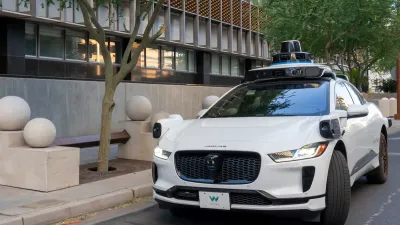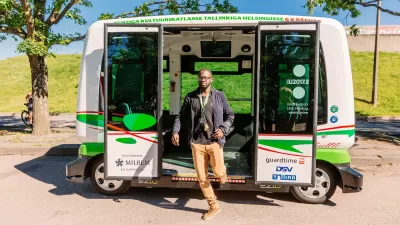There is a growing movement of humans who don't like the idea of being forced to hand the wheel over to robot drivers.

M.R. O'Connor introduces the world to an event called Radwood, an event that gathers vehicles from the pre-digital-technology years before 2000, and the Human Driving Association, "an organization aiming to protect people’s freedom of movement and right to drive their own cars."
The H.D.A. imagines a future in which, for safety reasons, human driving is made illegal. To prevent this scenario from coming to pass, it advocates laws requiring carmakers to include a steering wheel in every vehicle; it also argues that every future car should be fully drivable under hundred-per-cent human control. For members of the H.D.A., events like Radwood aren’t purely nostalgic. They’re an expression of resistance. They believe that, in a world of level-five autonomous vehicles, driving a 1991 Volvo GL could become a radical political act. It might make you an outlaw.
Along the way, O'Connor attends Radwood, introduces readers to the founder of HDA, and links to some of the reading materials that help build an understanding of the foundational ethos of the HAD crowd. HAD founder Alex Roy wrote a manifesto, for instance, in response to a manifesto written by the CEO of Zipcar.
Among the central tenants of Roy's writing is the idea that the media and the public are too quickly buying the idea that the future will be autonomous, to which we reply: not so fast.
- Study: Self-Driving Cars Have Trouble Detecting People of Color
- Study: Self Driving Cars Could Worsen Congestion and Inequality
- Watch a Self-Driving Car Take Out an Autonomous Robot
- 2018 in Review: A Rough Year for Self-Driving Cars
- Peter Calthorpe's Self-Driving Car Dissent
- Rebecca Solnit: Public Transit Is Greater Than Self-Driving Cars
FULL STORY: The Fight for the Right to Drive

Alabama: Trump Terminates Settlements for Black Communities Harmed By Raw Sewage
Trump deemed the landmark civil rights agreement “illegal DEI and environmental justice policy.”

Planetizen Federal Action Tracker
A weekly monitor of how Trump’s orders and actions are impacting planners and planning in America.

The 120 Year Old Tiny Home Villages That Sheltered San Francisco’s Earthquake Refugees
More than a century ago, San Francisco mobilized to house thousands of residents displaced by the 1906 earthquake. Could their strategy offer a model for the present?

In Both Crashes and Crime, Public Transportation is Far Safer than Driving
Contrary to popular assumptions, public transportation has far lower crash and crime rates than automobile travel. For safer communities, improve and encourage transit travel.

Report: Zoning Reforms Should Complement Nashville’s Ambitious Transit Plan
Without reform, restrictive zoning codes will limit the impact of the city’s planned transit expansion and could exclude some of the residents who depend on transit the most.

Judge Orders Release of Frozen IRA, IIJA Funding
The decision is a victory for environmental groups who charged that freezing funds for critical infrastructure and disaster response programs caused “real and irreparable harm” to communities.
Urban Design for Planners 1: Software Tools
This six-course series explores essential urban design concepts using open source software and equips planners with the tools they need to participate fully in the urban design process.
Planning for Universal Design
Learn the tools for implementing Universal Design in planning regulations.
Clanton & Associates, Inc.
Jessamine County Fiscal Court
Institute for Housing and Urban Development Studies (IHS)
City of Grandview
Harvard GSD Executive Education
Toledo-Lucas County Plan Commissions
Salt Lake City
NYU Wagner Graduate School of Public Service





























